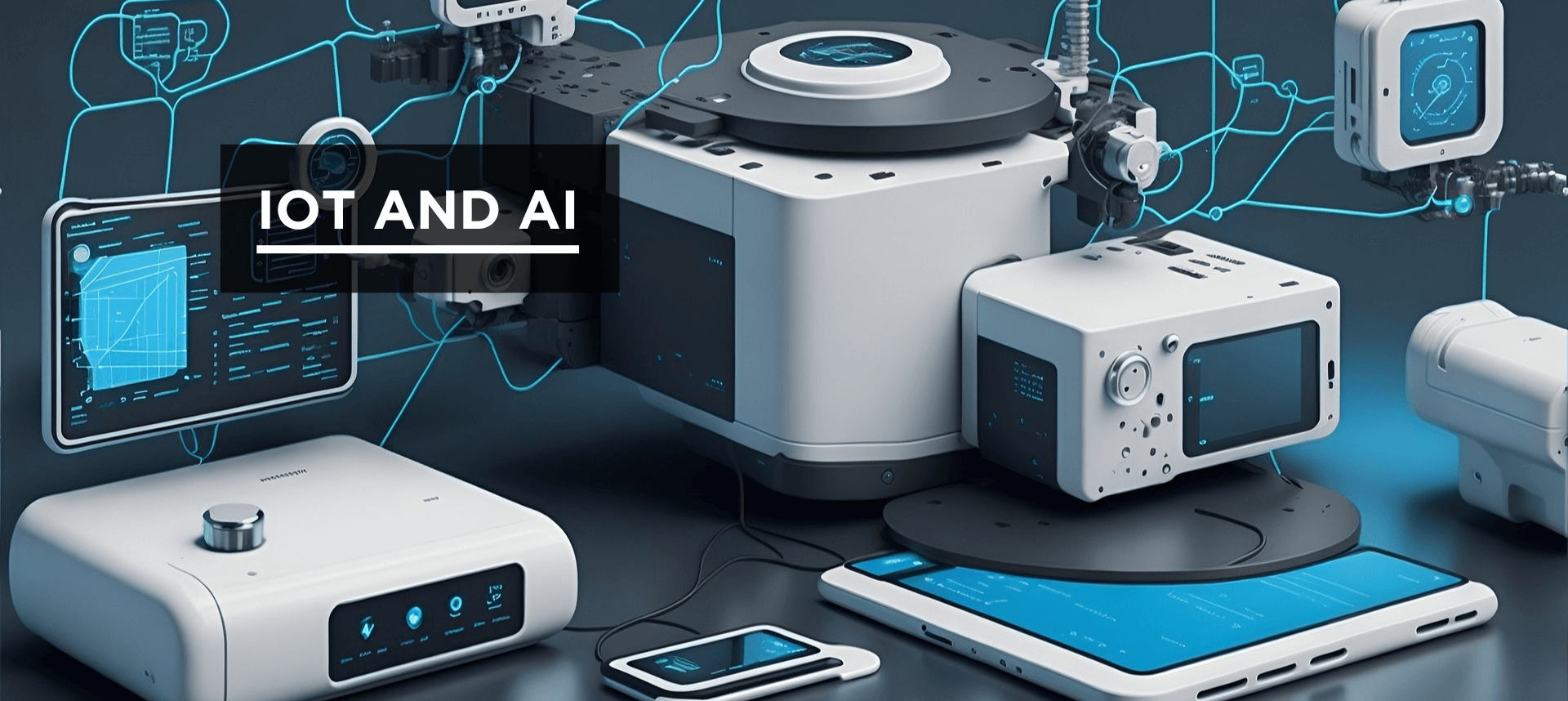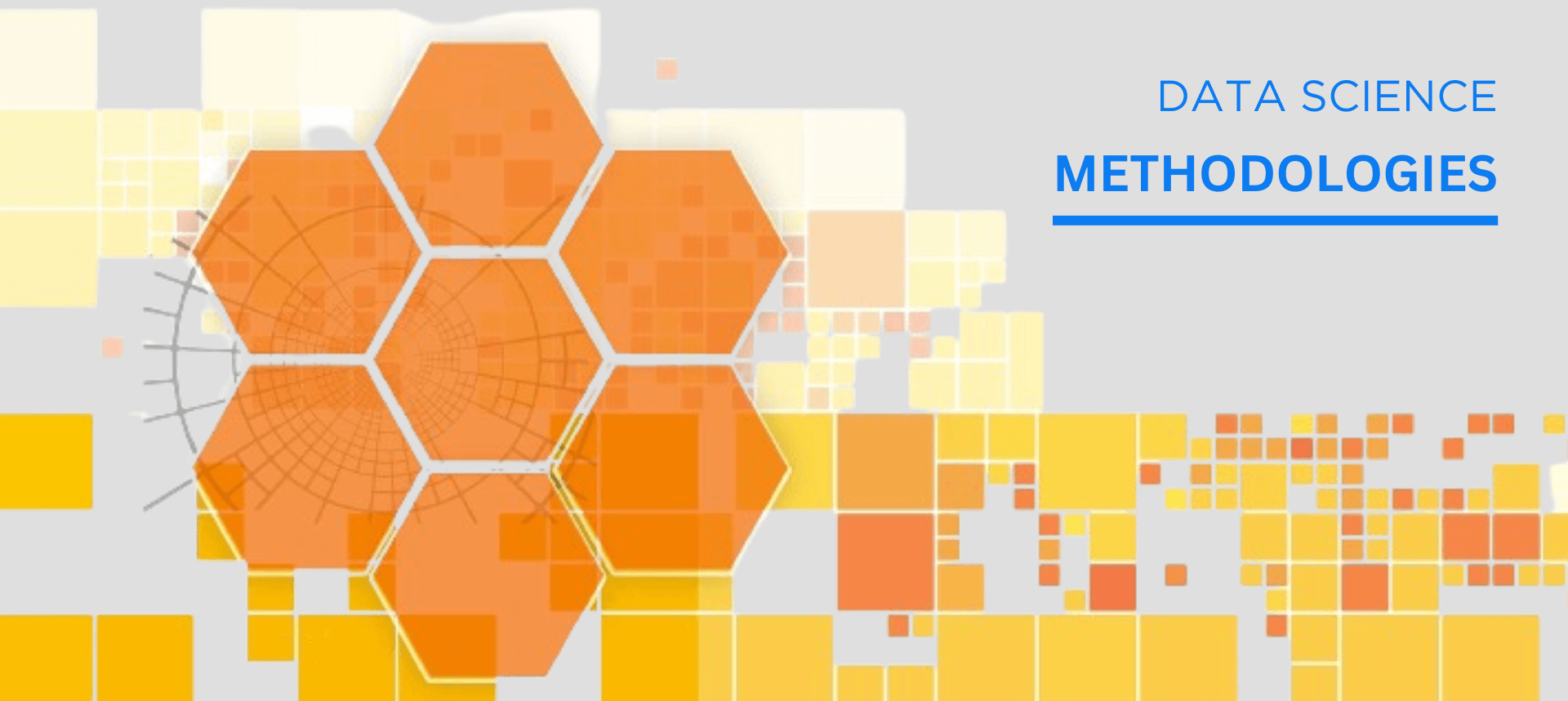Generative AI is often referred to as the creative powerhouse of Artificial Intelligence. With the help of Generative AI models, you can generate text, images, audio, synthetic data, or even music. With its ability to generate a wide range of content, Generative AI has found its way into a wide range of applications. From creating personalised marketing campaigns to generating realistic images, Generative AI has proved to be a driving factor behind innovations in various industries. In this article, we’ll dive into and study the various Generative AI Use Cases and discover how they’re reshaping the way we work, play, and interact with technology.
Introduction to Generative AI
Generative AI is that branch of Artificial Intelligence that generates new outputs depending on the data it has been trained on. Generative AI generates new content in the form of text, audio, graphics, and other data, in contrast to standard AI systems that are built to identify patterns and make predictions.
You can input a range of prompts to create new content that ranges from simple text to software code and even 3D designs.
Generative AI relies on continuously evolving techniques. It primarily relies on AI core models, which are trained on large amounts of unlabeled data and may be adjusted for different tasks through further fine-tuning. This approach produces advanced predictive algorithms by requiring large processing resources and complex mathematical computations.
The rise in popularity of Generative AI can be attributed to people’s increased ability to communicate with AI through natural language processing. As a result, Generative AI Use Cases have greatly increased. AI generators have become indispensable collaborators in a variety of fields, helping with writing, research, programming, design, and other roles.
Understanding Generative AI Models
To represent and analyse content, Generative AI models mix several AI techniques. To produce text, for instance, different natural language processing methods convert raw characters (letters, punctuation, and words) into sentences and actions. These are then represented as vectors using a variety of encoding techniques. In a similar way, vectors are used to express different visual aspects of photographs.
In addition, it’s important to keep in mind that different Generative AI models have different sets of components. The particular elements of a Generative AI model can change based on the model’s architecture and intended use. Different components or versions of them may be used by different Generative AI models.
Types of Generative AI Models
Variational Autoencoders (VAEs)
VAEs are generative models that map incoming data into a latent space and reconstruct it back to the original data domain using an encoder-decoder architecture. To create new samples that match the learned data distribution, they strike a compromise between regularisation and reconstruction accuracy. In order to minimise reconstruction error and regularise the latent space distribution, VAEs go through a training phase that comprises model parameter optimisation. By adjusting locations inside the latent space representation, new and varied samples can be created. Common applications include image generation, data compression, and text and audio generation.
Generative Adversarial Networks (GANs)
A GAN’s two main components are a generator and a discriminator. While the discriminator assesses and separates the created samples from genuine ones, the generator creates new samples, such as pictures.
In the training phase, the discriminator and generator work together in an adversarial manner, during which the discriminator seeks to correctly classify samples and the generator tries to trick it. Both networks iteratively increase their performance through this competitive approach.
GANs have been applied to image synthesis, super-resolution, and image-to-image translation applications in computer vision. They have also been used to create realistic deepfake films, which raise ethical questions because they alter people’s faces in recorded material. GANs have proven to be effective instruments for data augmentation, allowing the creation of artificial data to improve the quality of machine learning model training.
Auto-Regressive Models
Auto Regressive models simulate the conditional probability of each data point with respect to the previous context in order to produce fresh samples. They make it possible to create complex sequences since they generate data sequentially. Auto-regressive models are trained to anticipate the next data point based on the previous context. During inference, they take samples from the conditional distributions they have learned to construct new samples.
Auto-regressive models find widespread application in three domains: text production, language modelling, and music composition. They capture interdependence in sequences, and their outputs are consistent and relevant to the context.
Flow Based Models
Flow-based models define an invertible transformation between the input and output spaces, thereby modelling the data distribution directly. They provide an effective density estimate in addition to data generation.
Complex data distributions are modelled through the use of normalising flows, a series of invertible transformations. The computation of likelihoods and sampling can be done efficiently because of these changes.
Applications for flow-based models include anomaly detection, density estimates, and image production. They have benefits including precise sampling, flexible latent space modelling, and tractable likelihood evaluation.
Transformer Based Models
Transformer based model is a type of deep learning architecture that has gained immense popularity and success in natural language processing (NLP). It employs an attention mechanism to effectively represent the connections between different items in a series. Transformers can produce sensible text because they can parallelize and manage long sequences.
Transformer models are widely used in language models, such as GPT (Generative Pre-trained Transformer), which is transformer-based. Models like the GPT-3 have demonstrated an amazing capacity to generate language that is contextually relevant and coherent when given a signal. They have been used for several natural language processing (NLP) activities, including text completion, question answering, translation, and summarization.
Generative AI Use Cases
Generative AI can generate new realistic animated materials, text, and images within minutes. It has applications in many industries and is transforming company operations due to its enormous potential. Generative AI Use Cases include applications across a range of industries, including gaming, marketing, media, advertising, healthcare, and many more.
In this article, we will explore the popular Generative AI Use Cases and their applications in various fields.
Image Generation
- Photorealistic Images – Generative models can create highly detailed, photorealistic images of scenes, objects, and even people. This is valuable for the design, advertising, and entertainment industries.
- Image-to-Image Translation – These models can convert the style of an image, such as applying the characteristics of famous artists’ works to photographs, and generate images based on textual descriptions or other images.
- Image Super–Resolution – Generative AI can enhance the resolution and quality of low-resolution images, making them sharper and more detailed. One of the very important applications of this is in surveillance and security.
- Face Generation and Manipulation – Generative models can generate realistic human faces and even manipulate facial attributes like age, gender, and facial expressions. This is used in gaming, animation, and virtual avatars.
- Image Denoising and Restoration – Generative AI can remove noise, artefacts, and imperfections from images, which is beneficial in medical imaging, historical photo restoration, and enhancing surveillance footage.
- Computer–Generated Imagery (CGI) – In the film and entertainment industry, these models can create CGI elements, such as characters, creatures, and backgrounds, making visual effects more realistic and cost-effective.
- Text to Image Synthesis – These models can generate images based on textual descriptions, such as creating scenes from novels or generating visual content for educational purposes.
Some examples of Image Generation applications are DALL-E, Midjourney.
Video Generation
- Video Synthesis – Generative AI can create synthetic videos, including scenes, characters, and objects, which can be used in film and animation production, video game development and virtual simulations.
- Deepfake Technology – While controversial, deepfake technology uses Generative AI to replace faces in videos allowing for realistic impersonations or special effects in the film and entertainment industry.
- Video Upconversion and Enhancement – Generative models can upscale the resolution of videos, making them sharper and more detailed. This is beneficial for improving the quality of old or low-resolution video content.
Some examples of Video Generation applications include Synthesia, Hourone, Deepbrain.
Audio Applications
- Text-to-Speech (TTS) Synthesis – Generative AI models can convert text into natural-sounding speech, enabling the development of virtual assistants, audiobooks, voiceovers and more.
- Voice Cloning and Synthesis – These models can clone a person’s voice based on a small voice sample, which has applications in voiceovers, voice assistants and personalized voice experiences.
- Music Composition – One of the Generative AI use case is music composition. These models can compose original music, generate melodies, harmonies and entire musical pieces in various styles and genres.
- Voice Translation – Spoken language can be translated into another language using the speaker’s own voice, enabling seamless multilingual communication.
- Audio Enhancement – Generative models can reduce noise and enhance audio quality, which is valuable for cleaning up audio recordings. They can remove the background noise and enhance speech quality in applications such as conference calls, audio recording and voice chats.
Some examples of Audio Generation applications are Speechify, Resemble, Narakeet.
Text Generation
- Content Generation – AI models can generate automated content for news articles, blog posts, and reports. It can be used to generate Product descriptions for Ecommerce industry.
- Conversational Agents – Generative AI models can be used to develop conversational agents for customer support, virtual assistants and more.
- Language Translation – Text can be translated from one language to another with the help of Generative AI models.
- Content Personalization – Personalized content can be generated with the use of Generative AI models for individual users based on their preferences and behaviour.
- Creative Writing – Generative AI models can be used for generating poetry, short stories, or even entire novels. They can also be used to generate song lyrics as well as video scripts.
- Text-Based AI Training – Labeled training data can be generated for machine learning and natural language processing models.
Some examples of Text Generation applications are ChatGPT, Google Bard.
Software Development
- Code Generation – Generative AI can generate machine learning code, automating the process of selecting algorithms, tuning hyperparameters and even generating code for training and deploying models. It can automate the generation of repetitive boilerplate code thereby saving developers’ time and reducing errors. Also, it can assist in generating complex database queries and data manipulation code.
- Code Refactoring – Generative models can analyze existing codebase and suggest improvements, including code restructuring, optimization and identifying and fixing code.
- Code Translation – Code can be translated from one programming language to another, aiding in porting legacy code or making libraries compatible with multiple programming languages.
- Bug Detection and Fixing – AI models can identify and automatically fix bugs or vulnerabilities in the code, thereby improving code security and reliability.
- Automated Testing – AI driven test case generation can automatically create test scenarios, helping ensure software quality and coverage.
- Software Design and Architecture – AI can assist in designing software architecture by generating architectural diagrams, helping with system design and scalability.
Some examples of Software Development applications are ZZZ Code.AI, FavTutor, OpenAI Codex, GitHub Copilot.
Healthcare Applications
- Medical Image Generation – Generative models can create synthetic medical images that closely resemble real patient data. This is valuable for training machine learning algorithms, especially when real medical images are limited or for privacy reasons.
- Radiology and Pathology – AI can enhance the quality of medical images by reducing noise, enhancing contrast, and sharpening details. This aids in better diagnosis and treatment planning. Generative models can generate synthetic images of tissues and cells, aiding pathologists in training and improving diagnostic accuracy.
- Drug Discovery and Development – Generative models can suggest novel molecular structures for drug candidates. They can also predict drug-target interactions, aiding in the discovery and optimization of pharmaceutical compounds.
- Personalized Treatment Plans – Generative AI can analyze patient data, including medical records, genetic information, and treatment history, to create personalized treatment plans, including drug dosages and therapy options.
- Medical Simulations and Training – Generative models can create realistic, interactive medical simulations for training healthcare professionals in a safe environment.
- Disease Prediction and Early Diagnosis – AI can analyze electronic health records and patient data to predict disease risk and aid in early diagnosis.
- Health Monitoring and Wearables – Generative AI can analyze data from wearable devices, such as smartwatches and fitness trackers, to provide insights into a person’s health and suggest interventions for chronic disease management.
Some examples of Generative AI application in healthcare are Buoy, HUCU.AI, SkinVision, binah.ai, Sensely, Ada AI Doctor.
Applications in Education
- Adaptive Learning Paths – Generative models can create adaptive learning paths and tailor content to individual students’ needs and abilities, ensuring more efficient and personalized learning experiences.
- Language Learning – AI can assist in language learning by providing translations, pronunciation guides, and language exercises, helping students improve their language skills.
- Auto Grading – Generative AI can grade assignments, tests, and quizzes, providing quick and consistent feedback to students.
- Educational Games & Simulations – Generative AI can create educational games and simulations, making learning more engaging and interactive. These games can cover a wide range of subjects, from history and science to mathematics and language learning.
- Virtual Tutors & Chatbots – Chatbots and virtual tutors powered by generative AI can provide immediate answers to student questions and help with study strategies.
- Curriculum Planning & Generation – Generative AI can assist in creating curricula and generating course materials, ensuring that educational content aligns with learning objectives and standards.
Banking and Finance
- Algorithmic Trading – Generative AI can be used to develop trading algorithms that analyze market data, identify trends, and execute trades autonomously.
- Fraud Detection – AI models can generate anomaly detection algorithms to identify unusual patterns in financial transactions and detect potential fraudulent activities.
- Risk Management – AI can assist in the development of risk models and generate risk mitigation strategies for banks and financial institutions.
- Market Research & Trend Analysis – AI can generate reports and insights on market trends and investment opportunities based on a wide range of financial data sources.
- Predictive Analytics – AI can generate predictive models for stock price forecasting, currency exchange rate predictions, and other financial markets trends.
- Portfolio Management – AI can assist in portfolio optimization by generating strategies that balance risk and return, helping investors make informed decisions.
- Personal Finance Management – AI-powered apps and platforms can provide personalized financial advice, budgeting assistance, and investment recommendations to individuals.
Challenges and Ethical Considerations
Generative AI offers immense potential, but it also presents several challenges and ethical considerations that need to be addressed to ensure responsible and safe deployment. Here are some of the key challenges and ethical considerations in Generative AI:
- Bias and Fairness: Generative AI models can inherit biases from the training data, which can lead to biased outputs. Addressing bias and ensuring fairness in AI-generated content is essential, especially in applications like healthcare, hiring, and law enforcement.
- Misinformation and Deepfakes: The ability to generate realistic fake content, such as deepfake videos and text, poses a significant threat to misinformation and disinformation. It can be used to create convincing hoaxes, impersonate individuals, and manipulate public opinion.
- Privacy Concerns: Generative AI can create synthetic data that resembles real individuals, potentially infringing on privacy rights. Privacy-preserving techniques and regulations are needed to protect individuals from unauthorized use of their likeness.
- Verification and Attribution: Authenticating the source and authorship of AI-generated content is challenging. Developing reliable methods for verifying content and establishing accountability is crucial.
- Environmental Impact: Training large generative models requires significant computational resources, contributing to high energy consumption and carbon emissions. Developing more energy-efficient AI training methods is a pressing concern.
- Regulatory Compliance: Legal and regulatory frameworks need to be updated to address the unique challenges posed by generative AI. Regulations must establish guidelines for content generation, deepfake detection, and data privacy.
- Security and Malicious Use: Generative AI can be exploited for malicious purposes, such as creating forged documents, conducting cyberattacks, and developing malicious chatbots. Safeguards and security measures are necessary to mitigate these risks.
Conclusion
Generative AI use cases are expanding rapidly, touching various sectors and unlocking new dimensions of creativity and efficiency. While we celebrate the remarkable progress made so far, it’s crucial to remain vigilant about the ethical considerations and challenges that arise. The future of generative AI holds promise for a world where industries are more innovative and creative, with machines as valuable collaborators in the creative process.
Generative AI is not just about technology; it’s about unlocking the imagination, reshaping industries, and inspiring the creators of tomorrow. As we venture deeper into this realm, we must tread carefully, ensuring that this transformative technology is harnessed for the benefit of all, driving progress, and enhancing the human experience.
In this blog post, we’ve explored the fundamentals of generative AI, its applications in various industries, and its transformative influence on creativity. We’ve also touched the challenges and ethical considerations associated with this technology. As the future of generative AI unfolds, one thing is certain: it holds the potential to shape a world where industries and creativity are forever changed.





